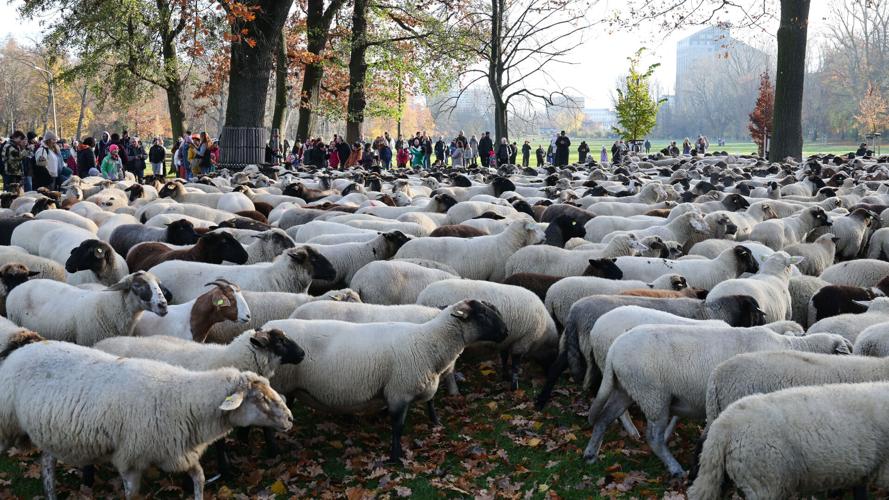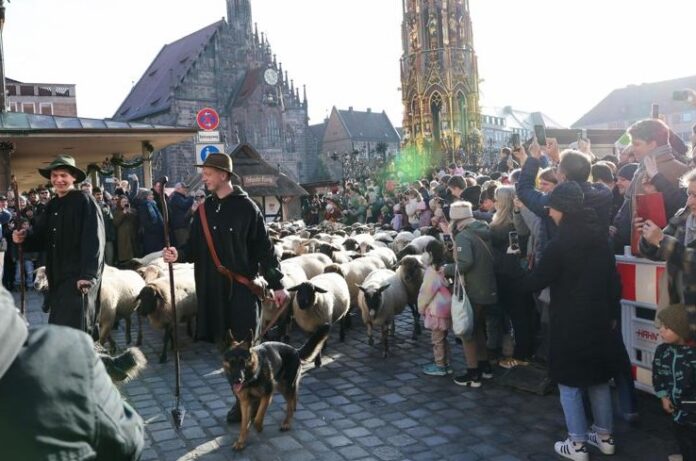Annual Sheep Crossing Germany: A Historic Tradition That Continues to Inspire
The annual sheep crossing Germany tradition has become one of the most heartwarming rural events to unfold in modern Europe. Beginning at the edge of Nuremberg and continuing toward the region’s winter pastures, this extraordinary movement of nearly 600 sheep has turned into a celebrated cultural moment that blends history, nature, and community.
Every year, residents and visitors gather across the city’s historic center to witness the long line of woolly travelers passing through streets that once hosted kings, merchants, and medieval traders. What once served as a practical farming necessity is now a beloved event cherished by families, historians, photographers, and tourists alike.
In this article, we’ll take a deeper look into why the annual sheep crossing Germany remains important, how it evolved into a popular tradition, and what makes it such a unique spectacle that continues to draw hundreds of spectators each year.

Why the Annual Sheep Crossing Germany Tradition Exists
For centuries, shepherds in the Nuremberg region followed a seasonal grazing pattern. As temperatures dropped, transporting sheep to warmer winter pastures became essential for their survival. What started as a routine farming practice evolved into a cultural event as the city expanded and more people began observing and celebrating the journey.
Today, the annual sheep crossing Germany stands as a powerful reminder of the region’s agricultural heritage. It highlights the centuries-old relationship between shepherds and the land, offering a glimpse into a lifestyle that predates modern farming technology.
A Living Link to Germany’s Past
One reason the tradition remains deeply respected is because it preserves a living connection to Nuremberg’s history. The city’s medieval architecture, cobblestone pathways, ancient bridges, and historic marketplaces, forms a stunning backdrop for the crossing.
This blend of historic scenery and natural movement makes the event an unforgettable sight. Children often watch in awe, while older generations recall the days when such rural experiences were routine rather than rare.
By keeping the annual sheep crossing Germany alive, locals ensure that traditions aren’t lost to modernization. Instead, they create an opportunity for people of all ages to understand how food, farming, and community once intertwined daily.
How the Sheep Crossing Has Grown into a Popular Event
At first, only nearby residents witnessed the movement of the flock. But with social media, local media coverage, and tourism growth, the event’s popularity has expanded far beyond Nuremberg.
Families now plan day trips to experience the crossing, while photographers travel from across Europe to capture images of the animals walking through historic alleyways. Influencers and travel bloggers have helped grow awareness as well, making the annual sheep crossing Germany one of the country’s most charming seasonal traditions.
Local authorities fully support the event, coordinating with shepherds to ensure safety for both the animals and urban crowds. The city often shares maps and viewing areas on tourism websites so visitors can experience the event comfortably.
The Role of Local Shepherds in Preserving the Tradition
Behind the scenes, shepherds like Ann and Hayden Walter, the duo mentioned in this year’s event, play a crucial role. Their dedication ensures the flock remains healthy, well cared for, and ready for seasonal movement.
These shepherds are also educators, often taking time to speak with children, answer visitor questions, and highlight the importance of responsible livestock management.
Their efforts help build appreciation for rural professions that many people rarely encounter. Without their commitment, the annual sheep crossing Germany tradition would simply not exist.
Why the Event Continues to Draw Large Crowds
Here are a few reasons the crossing has become a fan-favorite cultural event:
1. A Rare Urban-Rural Moment
It’s not every day you see hundreds of sheep strolling calmly past ancient buildings, the charming contrast makes the event magical.
2. Perfect for Families
Children adore watching the animals, making it a wholesome outing for parents and grandparents.
3. A Photographer’s Dream
The crossing offers stunning visuals that capture Europe’s blend of heritage and natural life.
4. A Feel-Good Tradition
In a fast-paced world, the event brings people together to celebrate something simple yet meaningful.
5. A Reminder of Community Roots
It reinforces the idea that agriculture and city life can coexist harmoniously.
To learn more about Nuremberg’s tourism or historical traditions, you can explore these helpful resources:
-
-
Tourism info: https://www.germany.travel
-
Cultural heritage resources: https://www.unesco.org
-
These links provide additional background for readers who want to dive deeper into the cultural atmosphere surrounding the annual sheep crossing Germany tradition.

Final Thoughts
The annual sheep crossing Germany isn’t just a farming practice, it’s a living celebration of heritage, community, and the rhythms of nature. As nearly 600 sheep trek across Nuremberg each year, residents are reminded that even in a modern city, old traditions still have a powerful place.
Families gather, children laugh, shepherds guide their flocks, and tourists capture unforgettable moments. In a world where traditions often fade, this one continues to thrive, and amaze.

